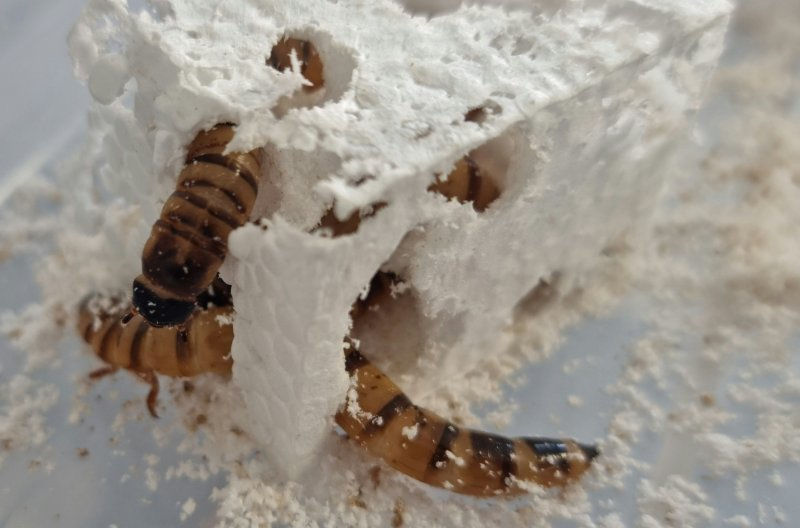By: Jason Youssef
Larvae, called “superworms,” have been discovered to survive solely on styrofoam. The type of larvae (called zophobas morio) has also been proven to efficiently mature on this styrofoam-only diet. This discovery was made by the University of Queensland in Brisbane, Australia, Scientists have deduced that this is due to special enzymes in the larvaes’ guts.
To conduct the study, the research team fed the superworms three separate meals. One group was given bran, a more average diet. The second group was given styrofoam (polystyrene). The third group was given nothing. Ninety percent of the larvae that ate bran became beetles, roughly 66 percent of the group given polystyrene became beetles, and 10 percent given no nourishment became beetles. This indicated that superworms have enzymes in their gut that can effectively digest Styrofoam.
The study’s aim is to not use the superworms, rather the enzymes the superworms produce in order to digest the styrofoam. The goal is for styrofoam to be compacted and then put into a solution of the enzyme to be disposed of or to make new, reusable plastic. Now, why is this important? The world is facing a plastic crisis.
Every year, half of all plastic made for one-time use becomes trash, clogging up landfills and decomposing extremely slowly while releasing greenhouse gases, according to the U.N. Environment Program. More than 14 million tons of plastic end up in the water every year, data shows, killing animals and degrading underwater habitats. With an enzyme like this, humanity is one step closer to solving the plastic crisis. However, it won’t be that easy.
It is very hard to find ways to combat this plastic problem, and many times, the methods we create are only meant to slow down the fight against plastic. Even with the discovery of this superworm, there are still lingering questions and insecurity.
Andrew Ellington, a professor of molecular biosciences at the University of Texas, said that finding plastic-eating organisms or enzymes that can degrade plastic in industrial conditions has proven difficult, which often process these problem plastics in very hot conditions or through the use of organic solvents.
“When you find something on a beach or you find something in a worm gut, that’s great, but all the enzymes in that thing work pretty much under the conditions where you found it,” he said. “And those may not be industrial conditions.” He then said that even if scientists gave up on the use of enzymes and just farmed the superworms and poured them into landfills, there would still be problems. The superworms only digest styrofoam and in landfills filled with many different types of plastic and other garbage, it wouldn’t be effective enough. He proposed the most efficient way was by making worm-based composting kits for average people to use.
So what’s the takeaway from all of this? Although it’s very hard to combat the current plastic crisis, we’re getting there, one step at a time.











